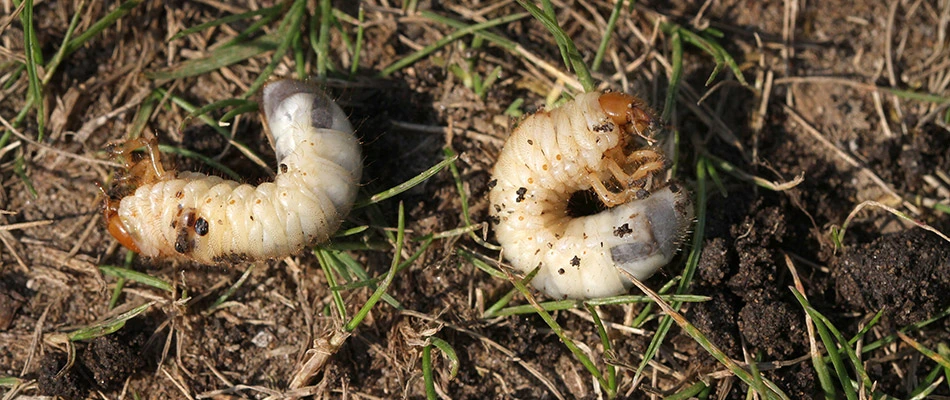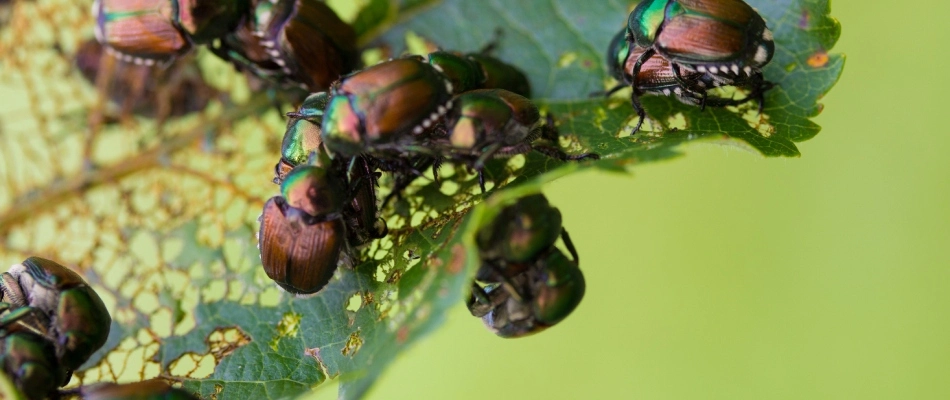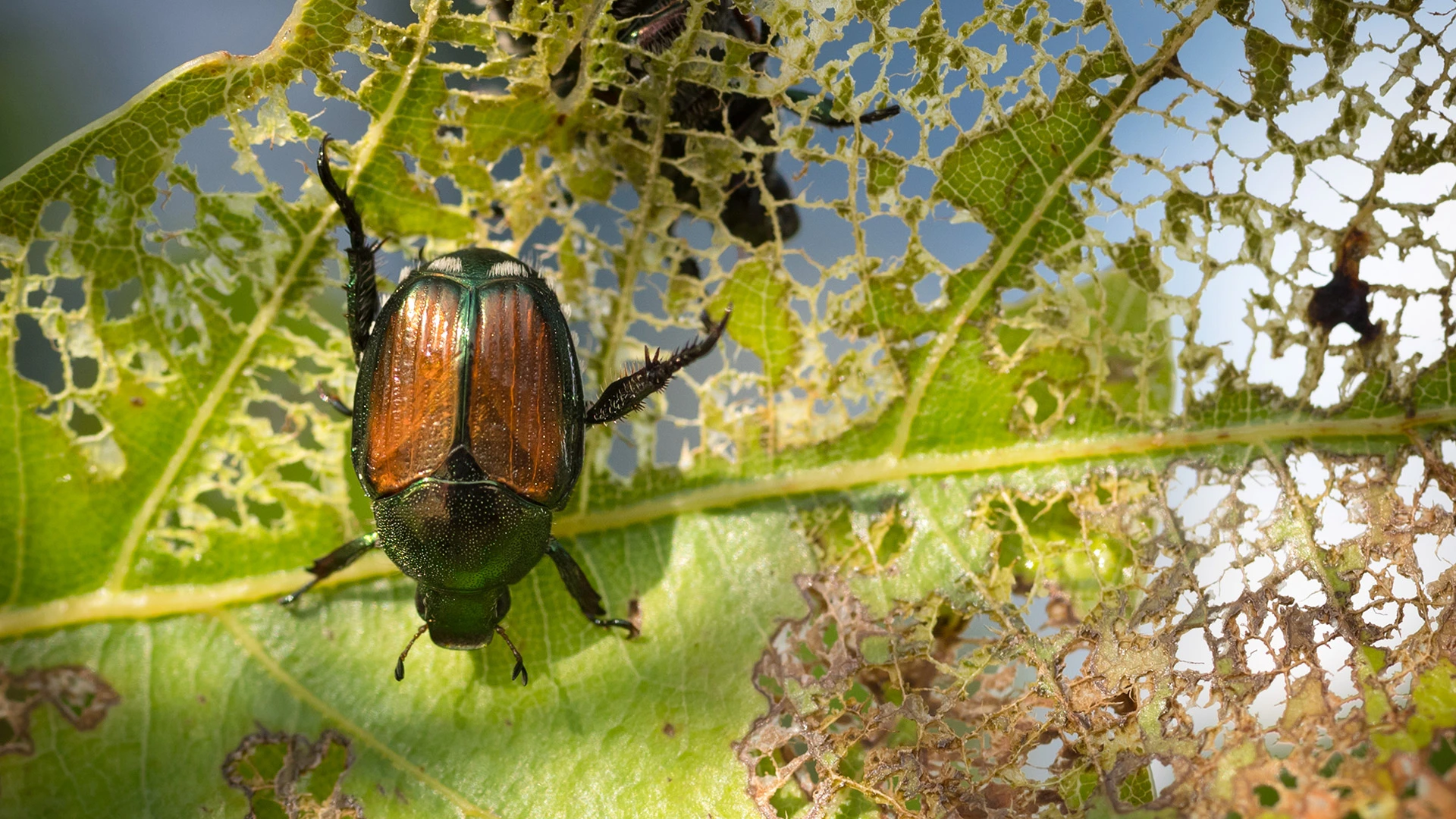With the warm and dry summer months in Michigan comes the inevitable threat of Japanese beetles. However, you can get ahead of this threat and save yourself the headache! Japanese beetles are born as grubs, hatching and then living beneath your lawn and munching on its roots. Eventually, they emerge from the lawn as fully grown Japanese beetles and begin feasting on your trees. Luckily, there are preventative grub control treatments available that will stop grubs before they ever reach the beetle life stage. These treatments should be applied in June to catch grubs at their most vulnerable state. With the preventative measures on your side, your trees will be safe from Japanese beetles!
The Japanese Beetle Life Cycle

To be able to accurately predict and prevent the Japanese beetle life cycle from completing, leading to a beetle takeover on your property, it's important to understand the stages of their life cycle. Japanese beetles will lay eggs in the soil beneath your grass that remain dormant until environmental conditions are right for them to hatch. Once they do, they'll hatch into white grubs that feed on the roots of your grass, doing damage to your lawn as they go. Eventually, they'll emerge from your lawn in the following spring as fully grown Japanese beetles that feast on your trees. Then, as they tunnel into the ground and lay their eggs, the cycle will begin all over again come summer.
Each female Japanese beetle can lay up to 60 eggs.
Preventative grub control will stop grubs from maturing into Japanese beetles and damaging your trees.

Once we understand the life cycle of the Japanese beetle, we can see that the pivotal time to strike is when they're most vulnerable – before hatching. Preventative grub control treatments do just that! These treatments will eliminate eggs before they have the opportunity to mature and hatch into grubs. This not only saves your lawn from their voracious munching, but saves your trees from the inevitable damage that would occur once the grubs grow into Japanese beetles.
Japanese beetles feed on the leaves, flowers, and fruits of many plants, including roses, apple trees, birch trees, marigolds, soybeans, and more.
When should you apply preventative grub control?
Japanese beetles, just like other lawn insects like chinch bugs and webworms, hatch and then thrive in warm and dry weather. For our area, that occurs most commonly from July to September. That makes June the prime time to apply your preventative grub control treatment, after the adult beetles have laid eggs but before they hatch into grubs! Once they hatch into grubs and enter the fall season, the grubs will burrow down deeper into the soil to escape the colder temperatures and, subsequently, become much more difficult to reach with treatments. The month of June is the most effective time of year to fight back against a grub invasion because it's when they're most vulnerable!
Battling Japanese beetles? Let us help. Call our team today to schedule our highly effective grub control treatments!
If you've struggled with Japanese beetles before, you know how devastating they can be to trees – with the help of our team at Big Lakes Lawncare, you'll never have to worry about it again! We're dedicated to protecting the lawns and landscapes of our customers, whether that's with a preventative treatment or a curative treatment to handle an infestation you're currently wrangling with. We are diligent in every application, ensuring that no area is missed and no grub goes undetected. Our highly effective grub control treatments are available in Macomb, MI and nearby cities like Shelby and Chesterfield. Get in touch with our office today by calling (586) 200-0855 and schedule your next preventative grub control treatment!




Comments (0)
Thanks for your comment!
Thanks for your feedback! Your comments have been successfully submitted! Please note, all comments require admin approval prior to display.
Error submitting comment!
There is a problem with your comment, please see below and try again.